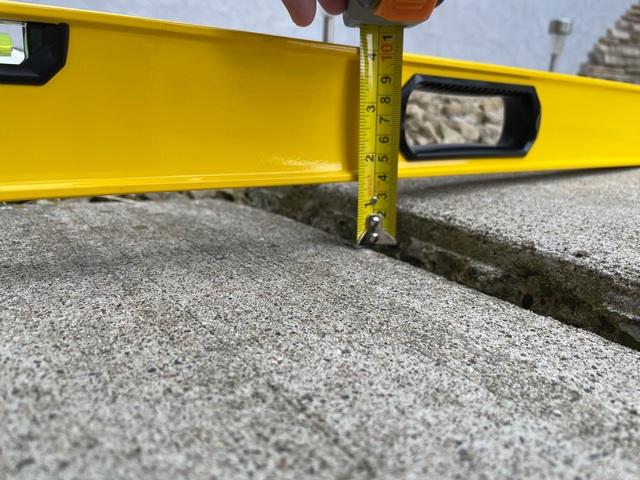
Building a bathroom in the basement is an exciting project for many homeowners. You can use the space for different purposes or make it more useful. Before you start, you need to determine the location of the rough plumbing, drain locations and wall placement. Before you start your bathroom project, you should first sketch out a floor plan, taking into consideration the size of plumbing fixtures and the swing of a door. Below are some tips to help you design your basement bathroom.
Installing plumbing
It is essential to determine which fixtures and pipes you will need before installing a basement bathroom. This can take some time, technical know-how and physical labor. You must also understand the regulatory requirements as certain jurisdictions may have their own codes. For instance, all toilets within certain jurisdictions must have ventpipes running along the exterior walls of the house.

Installing electrical
It can be difficult to install the electrical wiring in a basement bathroom renovation. While this task might seem easy enough, you have to be aware of the different safety standards that must be followed. It is important to ensure that your remodel area does not contain electrical hazards. This could pose a danger to your health. You should also check with your local building code before you begin any work.
Installing drywall
It is possible that you are wondering how to put drywall in a basement bathroom. Basement bathroom ceilings can be as low as four feet to six feet in height, so you will need moisture resistant drywall. To begin your job, score the ceiling's gel layer using a utility knives and fold it over. Next, trim cleanly the other side.
Choosing a commode
There are many factors that you should consider when selecting the type and style of commode that you want to use for your basement bathroom. While basement bathrooms tend to be spacious, gravity-fed plumbing can not work as well in a basement. This problem can be solved by installing a pressure -assisted toio. These units use air pressure to push waste through the pipes. These toilets may be more expensive than those that use gravity, but they provide several benefits.

Selecting a shower
Before you begin to remodel your bathroom, it is important that you decide what type of shower you want. Depending on the size of the room, a small shower will be adequate, but if your basement bathroom is large, you should look for a larger shower. A stand-up bath tub is better for smaller basement bathrooms. You will need to take into consideration the size of your bathroom's shower. This will allow you to choose the best type of design.
FAQ
Is There Any Way That I Can Prepare For Negotiation Beforehand?
Yes!
There are many ways that you can prepare yourself for negotiation.
One way to do this is to put down the terms & conditions of the agreement
Is a guarantee a service contract?
Service contracts are not warranties. It is an agreement between 2 parties to exchange goods. If the product is not performing satisfactorily, the customer agrees with the seller to cover the repair or replacement costs. This type contract is also known to be called a maintenance agreement.
How do I submit a building permit application?
Your SCA will not suffice. You must also provide evidence that:
-
Visitors have ample parking space.
-
They are also suitable for those who need to access them.
-
All utilities are available; and
-
All works must be in compliance with all applicable planning regulations.
Is there an upper limit on how much I can spend?
No. No. You may be able negotiate a lower price from the contractor.
What happens to one party if they don't want the other side?
Failure to keep your promises can result in the law permitting the other party to sue you and treat your promise as null. Damages are the amount owed, plus interest, court costs, legal fees.
What is the purpose and scope of the service agreement
A Service Agreement is used to establish the terms on which your customer will purchase goods from you. It also defines how you will provide those services to them for payment.
The most common type of such document is the Sales Order Form. You will need to state the products and prices that are being purchased by your customer. Next, list any additional items in the order. This includes delivery costs, VAT and insurance. The final step is to indicate when the order must be delivered and for what amount.
It is possible to use a different document depending on the nature of the transaction.
You might use an invoice if, for example, you are selling a product but providing a service.
You will probably need a Purchase Order Form to purchase items from another party.
Include all information when creating a sales order form.
Remember: The more detailed your sales order form is, the easier it will be for the buyer to understand.
Statistics
- Don't take their anger personally, they are mad about the situation 99% of the time. (activatemylicense.com)
- (v) Place or places of performance of the prime contract and first-tier subcontracts estimated at $10 million or more, if known. (acquisition.gov)
- Depending on the client's trustworthiness and financial stability, a deposit is usually 10 to 50% of the total contract amount. (lawdepot.com)
- Reasonable late fees go up to 25% per year on unpaid sums. (lawdepot.com)
- (3) The contracting officer may provide for a contract price adjustment based solely on a percentage rate determined by the contracting officer using a published economic indicator incorporated into the solicitation and resulting contract. (acquisition.gov)
External Links
How To
What should a Service Agreement include?
An SA is a key component of any business relationship. It describes what you expect of each other and how to achieve it. The SA also describes when and how you expect the other side to meet its contractual obligations.
These are the key components of a successful SA:
-
The scope of work and services required by both parties.
-
Details of payment terms including start date and end date for delivery of goods/services.
-
An agreed price for your project.
-
Additional charges such as VAT and other fees may apply.
-
Whether there are other topics that require discussion.
-
Who will take care of the job if it goes wrong?
-
How to resolve disputes
-
What happens to a contract breached by one party?
-
What happens in the case of a dispute?
-
When does the contract come into effect?
-
What happens if a party doesn't perform.
-
How long can you wait to pay invoices
-
Who pays for things like travel expenses.
-
Where the money comes.
-
What happens when the client has a change of mind?
-
What happens to the supplier if they don't show up.
-
Who has access to the site during construction?
-
What happens when the customer cancels a project?
-
What happens if the product fails?
-
What happens if the supplier refuses to sell parts?
-
What happens if your equipment breaks down?
-
What happens if the project takes more time than anticipated?
-
What happens if the work isn’t completed within the stipulated time?
-
What happens when the project's quality falls below what you expected?
-
What happens to the cost overruns?
-
What happens to the materials if they are not delivered on-time?
-
What happens if your material arrives damaged?
-
What happens if the products aren't up to standard?
-
What happens when the job is cancelled before completion?
-
What happens when the company goes under?